C
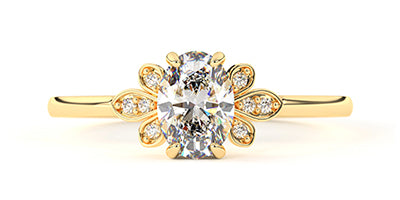
Carat
Carat is a unit of measurement used to indicate the weight of gemstones, particularly diamonds. One carat is equal to 200 milligrams. Larger diamonds with higher carat weights are rarer and typically more expensive, making carat one of the most important factors in determining a stone's value.
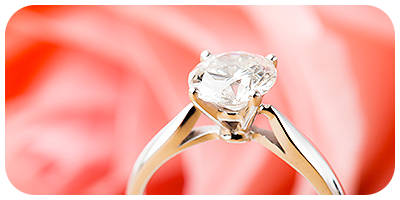
Cathedral Setting
The cathedral setting is designed with arches of metal that rise from the band to support the center gemstone, resembling the graceful lines of a cathedral. This classic setting elevates the center stone, giving it prominence while adding an elegant look. The arches can be plain or adorned with smaller stones, adding extra detail and height to the overall design.
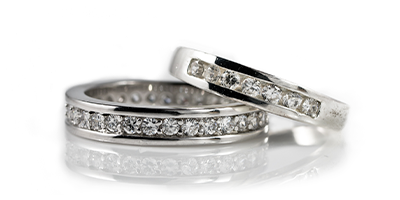
Channel Setting
In a channel setting, gemstones are set between two parallel metal walls, creating a seamless line of sparkle along the band. This setting style is commonly used in wedding bands and eternity rings, as it provides a smooth, elegant look while protecting the stones from chipping or snagging. The channel setting offers durability and is ideal for those who want a sophisticated design without exposed prongs.
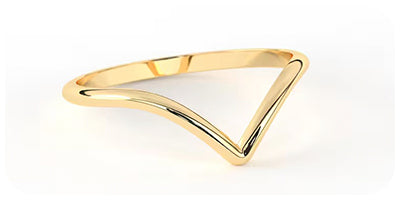
Chevron Ring
A chevron ring features a V-shaped design, with the band forming an elegant point at the center. This unique and modern style is often worn as a standalone piece or stacked with other rings, especially engagement or wedding bands. Chevron rings add geometric interest and can also symbolize protection or forward momentum, making them a meaningful choice for many wearers.
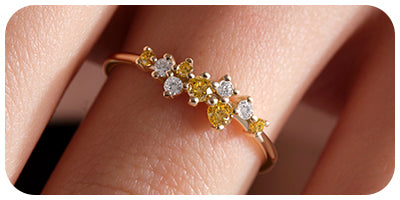
Citrine
Citrine is a golden-yellow to orange gemstone that brings warmth and energy to any jewelry piece. It is known for its affordability and durability, making it popular for everyday jewelry like rings and pendants. Citrine is the birthstone for November and is associated with prosperity and positivity, often believed to bring happiness and success to its wearer.
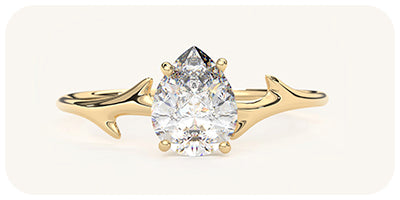
Clarity
Clarity refers to the presence of internal or external imperfections, known as inclusions and blemishes, within a diamond. These imperfections can affect the diamond's appearance and brilliance. Clarity is graded on a scale from Flawless (no visible inclusions) to Included (inclusions visible to the naked eye), with higher clarity stones generally being more valuable.
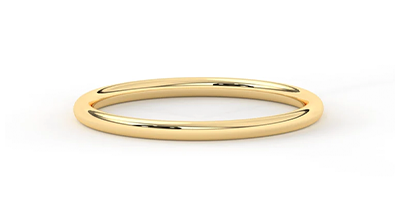
Comfort Fit
A comfort fit ring is designed with a rounded interior that allows the ring to glide more easily over the knuckle and sit comfortably on the finger. This design is especially beneficial for wider bands, as it provides a more natural and less restrictive feel. Comfort fit rings are perfect for those who want both elegance and ease of wear in their wedding bands or everyday rings.
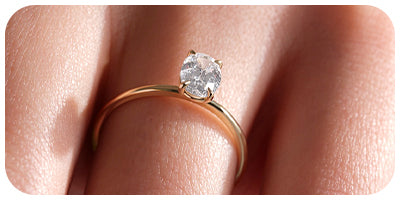
Crown (of a diamond)
The crown of a diamond is the upper portion of the stone, located above the girdle, consisting of the table and the surrounding facets. The crown's angle and proportions play a crucial role in how light is refracted within the diamond, influencing its brilliance and fire. A well-cut crown helps enhance the diamond's overall sparkle and contributes to its visual appeal.

Culet
The culet is the small, flat facet located at the very bottom of a diamond’s pavilion. While many diamonds have a pointed pavilion with no culet, some feature a tiny flat surface to prevent chipping. A larger culet can sometimes be visible through the table of the diamond, potentially affecting its brilliance. Ideally, the culet should be small or absent to avoid light leakage.
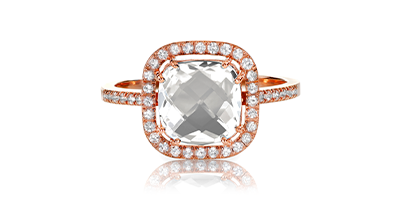
Cushion Cut
The cushion cut diamond, also known as a pillow cut, combines a square shape with rounded corners, giving it a soft, romantic appearance. This cut has been popular for over a century and is known for its large facets, which enhance the diamond’s brilliance and clarity. Cushion-cut diamonds are a perfect choice for vintage-inspired engagement rings and those who prefer a balance between classic and modern styles.
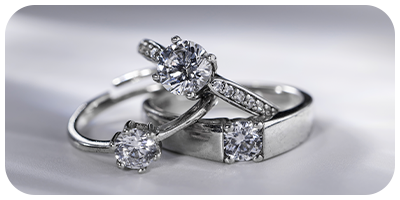
Cut
Cut is one of the Four Cs that measures how well a diamond's facets interact with light. It directly impacts the diamond’s sparkle, brilliance, and fire. The precision of the cut affects how light enters and exits the stone, and a well-cut diamond will reflect light in a way that maximizes its beauty. Poorly cut diamonds may appear dull even if they have excellent color and clarity.